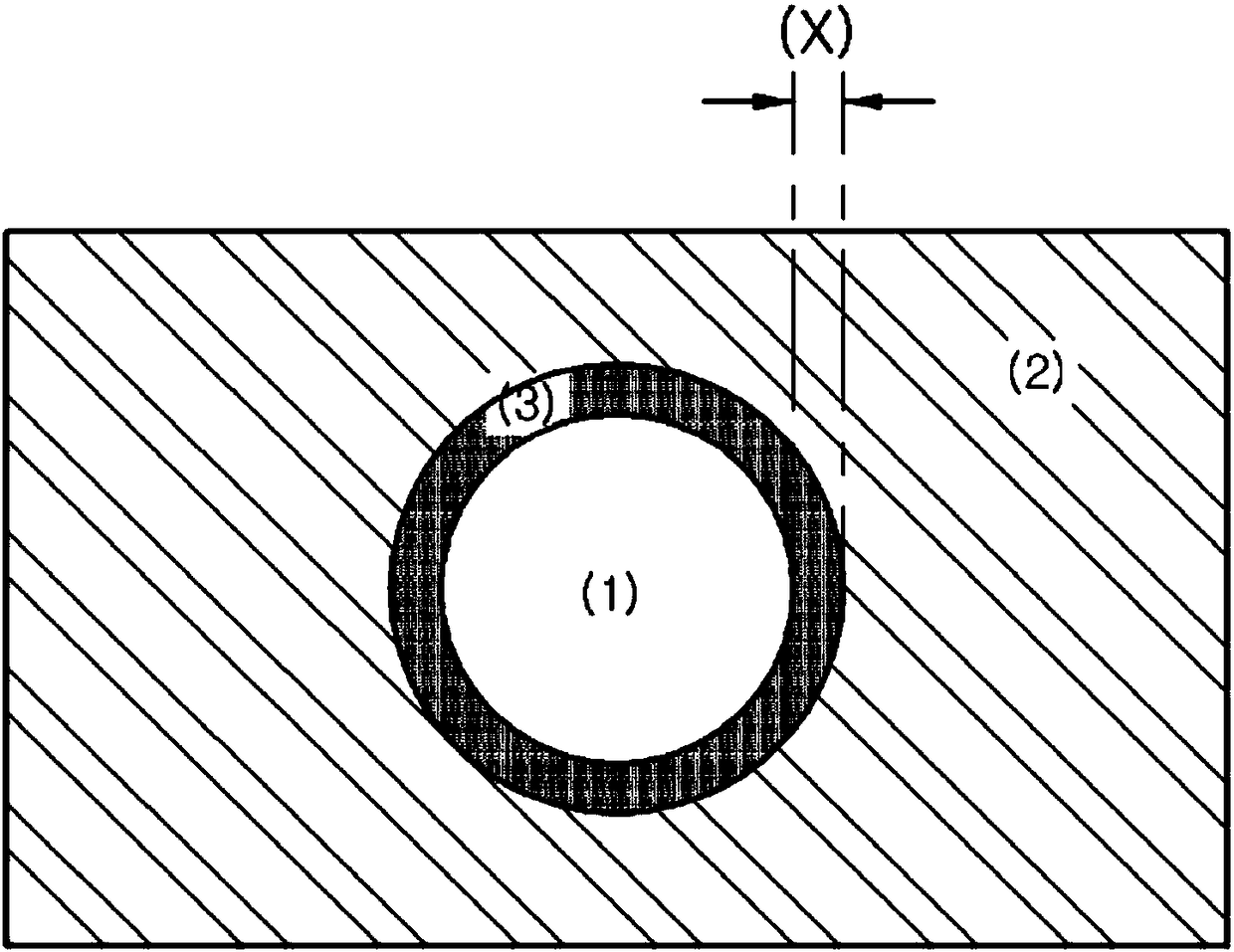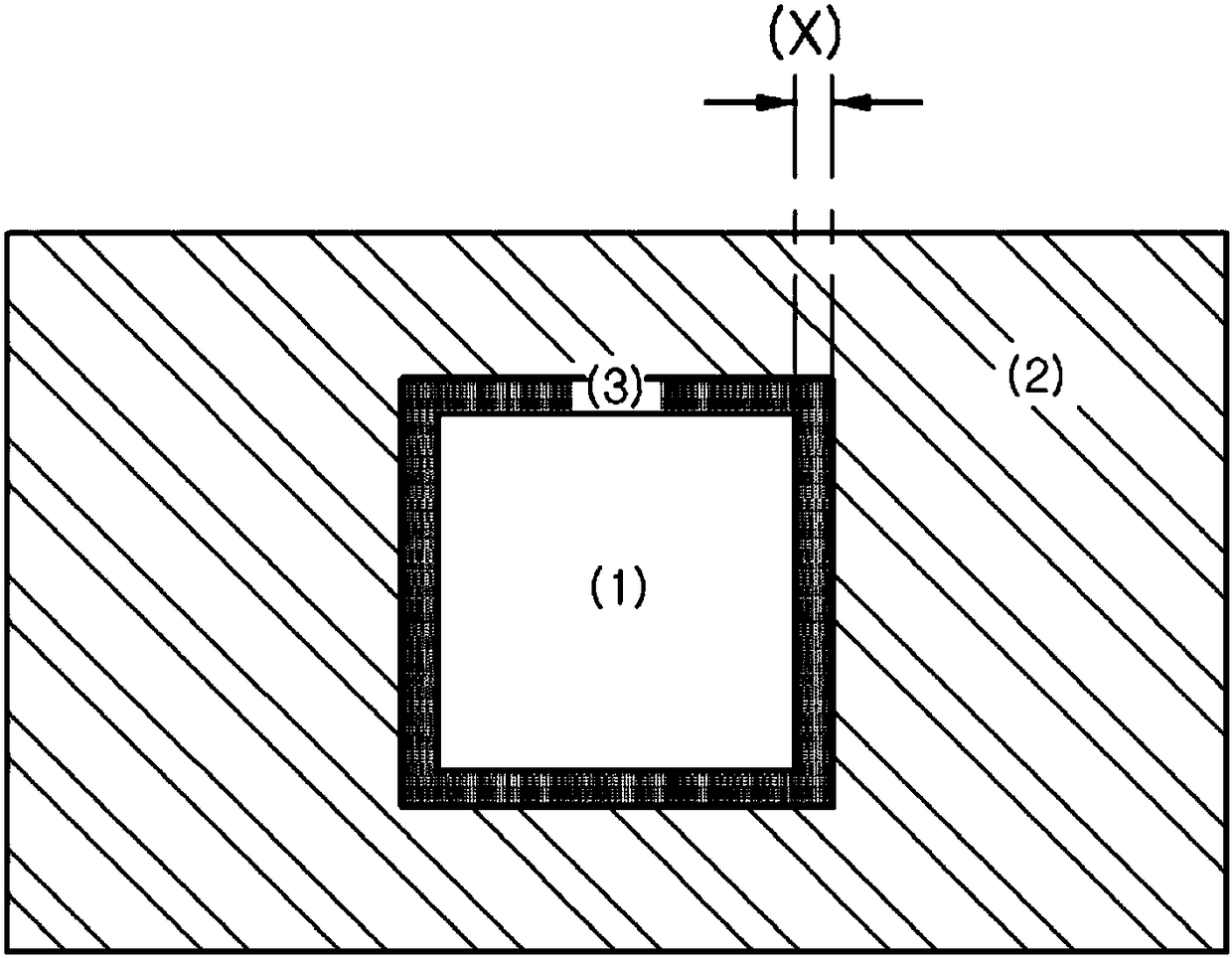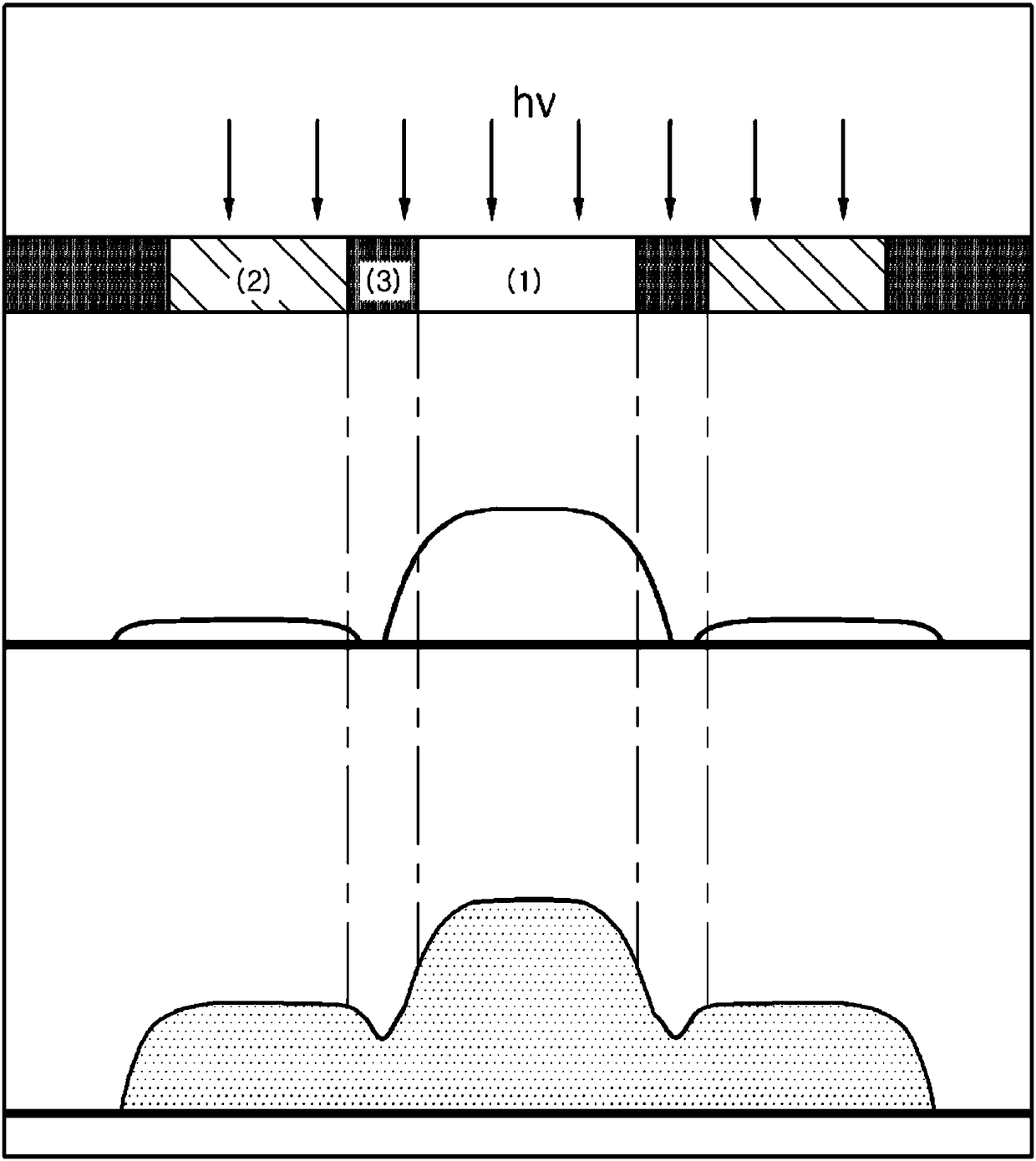Method for preparing column spacer
一种间隔物、柱状的技术,应用在制备柱状间隔物领域,能够解决间隔物部分临界尺寸增加、光屏蔽效应缓和等问题,达到简单且高效制造、临界尺寸减小的效果
- Summary
- Abstract
- Description
- Claims
- Application Information
AI Technical Summary
Problems solved by technology
Method used
Image
Examples
preparation example 1
[0156] Preparation Example 1: Preparation of Copolymer
[0157] Into a 500 mL round bottom flask equipped with a reflux condenser and stirrer was charged 100 g of a monomer mixture having the following component ratios: 51 mol % N-phenylmaleimide, 4 mol % styrene , 10 mole % of 4-hydroxybutyl acrylate glycidyl ether and 35 mole % of methacrylic acid, 300 g of PGMEA as solvent and 2 g of 2,2'-azobis(2,4- Dimethylvaleronitrile). Then, the reaction temperature was raised to 70° C., and the reaction mixture was stirred for 5 hours to obtain a copolymer having a solid content of 31% by weight. The copolymer thus prepared had an acid value of 100 mgKOH / g and a polystyrene reference weight average molecular weight (Mw) of 20,000 as measured by gel permeation chromatography.
preparation Embodiment 2
[0158] Preparation Example 2: Compounds Derived from Epoxy Resin Compounds Having a Cardo Main Chain Structure
[0159]
[0160] Step (1): Preparation of 9,9-bis[4-(glycidyloxy)phenyl]fluorene
[0161] Add 200 g of toluene, 125.4 g of 4,4'-(9-fluorenylidene)diphenol and 78.6 g of epichlorohydrin into a 3000 mL three-necked round bottom flask, and raise the temperature to 40° C. under stirring to obtain a solution. 0.1386 g of tert-butylammonium bromide and 50% aqueous NaOH (3 equiv) were mixed in a vessel, and the mixture was slowly added to the resulting solution with stirring.
[0162] The reaction mixture thus obtained was heated to 90° C. for 1 hour to completely remove 4,4′-(9-fluorenylene)diphenol, which was confirmed by HPLC or TLC. The reaction mixture was cooled to 30°C, and 400 mL of dichloromethane and 300 mL of 1N HCl were added thereto with stirring. Then, the organic layer was separated, washed with 300 mL of distilled water two or three times, dried over ...
preparation example 3
[0167] Preparation Example 3: Preparation of Colored Dispersion Liquid
[0168] 8 g of the copolymer obtained in Preparation Example 1 above, 8 g of a polymer dispersant (DISPERBYK-2000, BYK Co.), 12 g of carbon black, 53 g of lactam black as organic black (Black 582, BASF Co.), 16 g of C.I pigment Blue 15:6 and 384 g of PGMEA as solvent were dispersed at room temperature for 6 hours using a paint shaker. This dispersion step was performed with 0.3 mm zirconia beads. After the dispersion step was completed, the beads were separated from the dispersion using a filter, thereby yielding a colored dispersion having a solids content of 23% by weight.
PUM
| Property | Measurement | Unit |
|---|---|---|
| visible light transmittance | aaaaa | aaaaa |
| wavelength | aaaaa | aaaaa |
| acid value | aaaaa | aaaaa |
Abstract
Description
Claims
Application Information
 Login to View More
Login to View More - R&D
- Intellectual Property
- Life Sciences
- Materials
- Tech Scout
- Unparalleled Data Quality
- Higher Quality Content
- 60% Fewer Hallucinations
Browse by: Latest US Patents, China's latest patents, Technical Efficacy Thesaurus, Application Domain, Technology Topic, Popular Technical Reports.
© 2025 PatSnap. All rights reserved.Legal|Privacy policy|Modern Slavery Act Transparency Statement|Sitemap|About US| Contact US: help@patsnap.com



